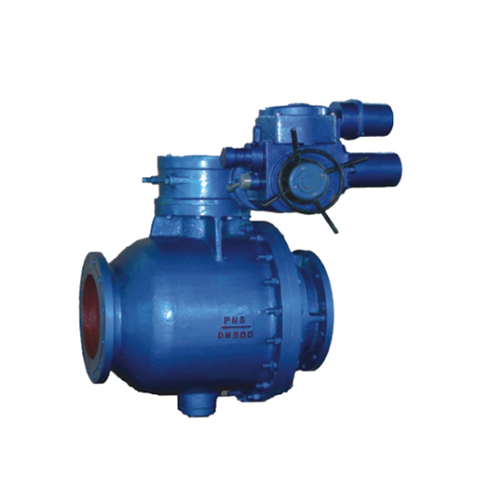
Stop Valve Packing and Sealing Structure Explained
1. Introduction
Stop valves, also known as isolation valves, are essential components in piping systems, used to control the flow of fluids (liquids, gases, or slurries). Their primary function is to start, stop, or regulate flow by opening, closing, or partially obstructing passageways. A critical aspect of stop valve performance is its sealing mechanism, particularly the packing and sealing structure, which prevents leakage around the valve stem.
This article provides a detailed explanation of stop valve packing and sealing structures, covering their purpose, types, materials, installation, maintenance, and common failure modes.
---
2. Purpose of Packing and Sealing in Stop Valves
The packing in a stop valve is a sealing material placed around the valve stem to prevent fluid leakage while allowing smooth stem movement. The sealing structure ensures:
- Leak Prevention: Prevents process fluid from escaping along the stem.
- Friction Control: Reduces wear between the stem and packing.
- Environmental Protection: Avoids hazardous fluid release.
- Operational Efficiency: Ensures smooth valve operation.
Without proper packing, valves would suffer from stem leakage, leading to safety hazards, environmental contamination, and operational inefficiencies.
---
3. Types of Valve Packing and Sealing Structures
Several packing and sealing configurations are used in stop valves, each suited for different pressure, temperature, and fluid conditions.
3.1. Compression Packing
The most common type, compression packing consists of rings made from flexible materials (e.g., graphite, PTFE, or aramid fibers) compressed around the stem by a gland follower or packing nut.
- Single-Ply Packing: Simple design with one layer of packing material.
- Multi-Ply Packing: Multiple layers for higher pressure resistance.
- Braided Packing: Interwoven fibers for better sealing.
3.2. O-Ring Seals
Used in smaller valves or low-pressure applications, O-rings provide a tight seal with minimal friction. They are typically made from elastomers (NBR, EPDM, Viton).
3.3. Lip Seals
These are dynamic seals with a flexible lip that maintains contact with the stem. They are common in rotary valves.
3.4. Bellows Seals
Used in high-pressure or hazardous applications, bellows seals provide a leak-proof barrier by using a flexible metal or PTFE bellows that expands and contracts with stem movement.
3.5. Live-Loaded Packing
Incorporates spring-loaded gland followers to maintain constant pressure on the packing, compensating for wear over time.
---
4. Common Packing Materials
The choice of packing material depends on temperature, pressure, chemical compatibility, and stem movement requirements.
| Material | Max Temp (°C) | Pressure Range | Key Properties |
|---------------------|------------------|-------------------|-------------------|
| Graphite | 650+ | High-pressure | Excellent thermal resistance, self-lubricating |
| PTFE (Teflon) | 260 | Low to medium | Chemically inert, low friction |
| Aramid Fiber | 300 | Medium to high | High strength, abrasion-resistant |
| Carbon Fiber | 400 | High-pressure | Lightweight, durable |
| Elastomers (NBR, EPDM, Viton) | 150-200 | Low-pressure | Flexible, good for dynamic seals |
---
5. Packing Installation and Adjustment
Proper installation ensures longevity and leak-free operation.
5.1. Installation Steps
1. Disassemble the gland follower to access the packing box.
2. Remove old packing carefully to avoid damaging the stem.
3. Clean the packing chamber to remove debris.
4. Insert new packing rings in staggered layers (if multi-ply).
5. Tighten the gland follower gradually, ensuring even compression.
6. Test the valve for smooth operation and leakage.
5.2. Adjustment
- Over-tightening can cause excessive friction and stem wear.
- Under-tightening leads to leakage.
- Live-loaded systems automatically adjust for wear.
---
6. Common Packing and Sealing Failures
Several issues can compromise valve sealing:
| Failure Mode | Causes | Solutions |
|------------------------|------------|--------------|
| Stem Leakage | Worn packing, improper compression | Replace packing, adjust gland |
| Excessive Friction | Over-tightening, dry packing | Lubricate, adjust compression |
| Packing Extrusion | High pressure, soft packing | Use reinforced packing |
| Chemical Degradation | Incompatible fluid | Select chemically resistant material |
| Thermal Breakdown | Excessive heat | Use high-temp packing (graphite) |
---
7. Maintenance Best Practices
To extend packing life:
- Regular inspections for leaks and wear.
- Lubrication (if required by packing type).
- Correct tightening torque (follow manufacturer specs).
- Replace packing at scheduled intervals.
---
8. Conclusion
The packing and sealing structure in stop valves is crucial for preventing leaks, ensuring safety, and maintaining efficiency. Understanding the different types of packing, materials, installation techniques, and failure modes helps in selecting the right sealing solution for specific applications. Proper maintenance further enhances valve performance and longevity.
By following best practices in packing selection, installation, and adjustment, engineers and technicians can optimize valve operation and minimize downtime in industrial systems.
---
This comprehensive guide covers the essential aspects of stop valve packing and sealing structures, providing valuable insights for professionals in valve maintenance and engineering.
Este sitio web utiliza cookies para garantizar que obtenga la mejor experiencia en nuestro sitio web.
Comentario
(0)